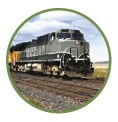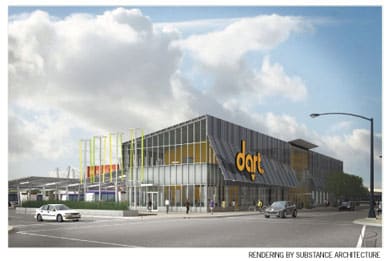2012 in Preview: Transportation


One of the larger unknowns going into 2012 is what kind of funding will be available for future transportation projects.
Typically the federal government has a multiyear authorization bill that gives state and local governments an idea of how much funding to expect for road projects in the next five or six years. Those projections haven’t been available since 2009; that gap, coupled with an uncertain year-to-year funding situation at the federal level, has left officials uncertain about what to expect in the future.
“Without knowing what your funding is, you’re kind of guessing what will be available, so you program out based on a different set of assumptions when you don’t know if those are completely correct,” said Todd Ashby, executive director of the Des Moines Area Metropolitan Planning Organization.
A large part of the issue, said Stuart Anderson, director of the planning, programming and modal division of the Iowa Department of Transportation, is that for the past several years, money coming into the federal Highway Trust Fund has not been able to keep up with funding requests, which has required making about $35 billion in general fund transfers to keep up with existing funding levels.
Federal funding to Iowa in fiscal year 2012 was about the same as in 2011, but officials didn’t know what the final funding level would be until a couple of months after the fiscal year had begun. Projections for fiscal 2013 are much lower.

The Iowa Department of Transportation (DOT) will move forward with a study on passenger rail service from Iowa City to Omaha.
Funding of $230 million that was originally awarded jointly to the Iowa and Illinois DOTs was split in late 2011, allowing Illinois to go forward with a line from Chicago to the Quad Cities with a $177 million portion.
Rather than match the funding to go forward with the project through to Iowa City, the state has elected to put the money on hold while the DOT completes a study to determine the benefits of having the line run through the entire state to Omaha.
The goal is to get a better idea of operating costs, ridership numbers and what it would take to offer higher speeds than the currently projected top speed of 79 mph. The study will also look at five routes for the potential line to take from Iowa City to Omaha, one of which goes through Des Moines.
“The whole purpose of this study is to have better information than we had, at least as we look at service that crosses the entire state of Iowa,” said Stuart Anderson, director of the planning, programming and modal division at the DOT. “We had very good information on what service would look like to Iowa City, but once we were starting to talk about issues going beyond Iowa City, we hadn’t done this kind of planning study.”
The DOT will hold multiple rounds of public input meetings throughout the year.

The future is here
Elizabeth Presutti, general manager of the Des Moines Area Regional Transit Authority (DART), has overseen some significant projects in her 3 1/2 years with the organization, including breaking ground on a new transit hub and completing a comprehensive plan for the future of the organization.
All that leads into 2012.
“I’d say it’s probably the biggest year since I’ve been here,” Presutti said. “This is definitely the year where it all comes together. The bow on the package will start to be complete.”
The hub, DART Central Station, is scheduled to be open to the public by November. Some bus routes will start to change as part of the DART Forward 2035 plan. DART also plans to launch a trip planner feature in 2012.
A big challenge will be presenting a proposed 10- to 17-cent property tax increase per $1,000 of valuation, which is consistent with DART’s vision in the 2035 plan. Presutti expects some naysayers, but said she has been encouraged by conversations with city councils from member communities.
“The communities and councils that we’ve spoken to understand the importance of public transit in the region and that we’re kind of at a juncture,” she said. “They’ve all been very pleased with the planning effort and recognize that we need to move forward with the plan, and with implementing the plan that there is that need for additional dollars.”










